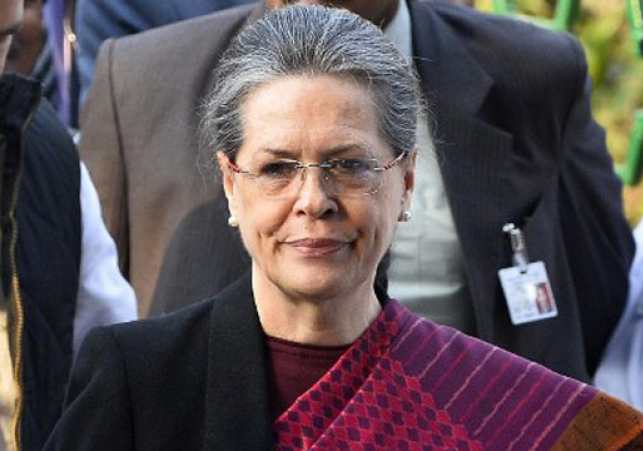

Congress president Sonia Gandhi instructed the party's Lok Sabha floor leader Adhir Ranjan Chowdhury to allow others a chance to engage in debates at an online meeting on January 28 to discuss strategy for the Parliament's Budget Session. For those in attendance, Gandhi's involvement demonstrated how closely he monitors the party's activities in Parliament.
According to sources familiar with the situation, she provides vital input and direction on parliamentary concerns while Rahul Gandhi focuses on organizational issues. Sonia Gandhi stated in a meeting prior to the Winter Session that she does not want Chowdhury to be removed as floor leader, describing him as a "real fighter." She claims he makes some blunders in Parliament, but that he also reads a lot and is well-versed in the rules and procedures.
Sonia Gandhi smiled as she asked Manish Tewari about his mood at the January 28 meeting. "I am absolutely fine, ma'am," Tewari said, grinning, despite his dissatisfaction with the party's affairs in poll-bound Punjab.
Sonia Gandhi, the Congress's parliamentary party's leader, invited representatives from the Dravida Munnetra Kazhagam, Shiv Sena, Nationalist Congress Party, Communist Party of India (Marxist) or CPI(M), and the National Conference to a floor strategy meeting on December 14 to discuss how to break the impasse over the suspension of 12 Opposition lawmakers. Despite tensions between the two parties over defections from the Congress to Bengal's ruling party and invective directed at one other, she kept the Trinamool Congress out.
Rahul Gandhi also makes decisions that are largely connected to the parliamentary party's daily strategies. Rahul Gandhi attended daily meetings in the office of Mallikarjun Kharge, the leader of the Opposition in the Rajya Sabha, during the Monsoon Session last year. During the Budget Session last year, he also convened a breakfast meeting with the Opposition leaders.
Sonia Gandhi is noted for successfully handling alliances, having played a crucial role in bringing 15 parties together to create the government with the aid of Left parties in 2004 when the Atal Bihari Vajpayee-led government lost power.
As the president of the Congress and the parliamentary party chairwoman, she plays a stronger role in Parliament.
While she has delegated various tasks within the organization to others, a Congress strategist who did not want to be identified claimed she still has the last word on Rajya Sabha tickets. "Former Prime Minister Manmohan Singh was hesitant to seek re-election to the Rajya Sabha in 2019, but Sonia Gandhi convinced him to do so."
According to the strategist, a former chief minister and a family loyalist with ties to Indian cricket were interested in taking a vacant seat from Maharashtra in December, but Sonia Gandhi decided to give it to Rajani Patil.
Before the reshuffle in the parliamentary standing committees last year, a section of the party wanted a Congress leader to be removed as the head of one of the panels. Sonia Gandhi refused to let that happen and allowed the senior leader to continue.
Party insiders are unsurprised over Sonia Gandhi’s interventions in parliamentary management. At a Congress Working Committee meet amid rumbling within the party and demands from 23 leaders for an overhaul of its functioning, Sonia Gandhi last year said she remains a hands-on president.
The Congress already has two panels: a parliamentary strategy group led by Gandhi that looks into bigger concerns like parliamentary functioning, and a smaller body led by P Chidambaram that scrutinises all government proposals.
Sonia Gandhi is an Indian politician who was born in Italy. She is the president of the Indian National Congress, a left-wing political party that has ruled India for the majority of the country's post-independence history.
Read more: Adityanath's remark has sparked a controversy